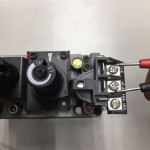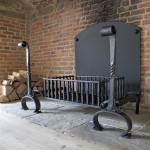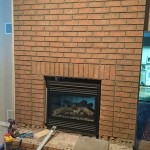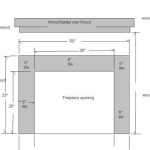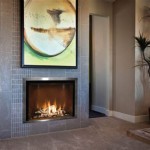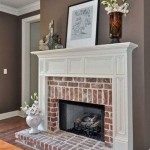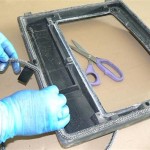Can You Mount a TV on a Fireplace Wall? Considerations and Best Practices
Mounting a television above a fireplace is a popular design choice, often seen as a way to maximize space and create a focal point in a living room. However, this seemingly simple integration presents several challenges that require careful consideration. Before embarking on this project, it is crucial to assess the potential risks and benefits to ensure the safety of the equipment and the comfort of those using the space.
This article will provide a comprehensive examination of the factors involved in mounting a television above a fireplace. The discussion will cover potential problems, necessary precautions, and alternative solutions, allowing individuals to make an informed decision about whether this setup is suitable for their particular situation.
Heat Exposure and Electronic Components
The primary concern when mounting a television above a fireplace is heat exposure. Modern televisions are electronic devices sensitive to high temperatures. Prolonged exposure to heat emanating from a fireplace can significantly reduce the lifespan of a television, causing issues such as screen discoloration, component failure, and overall performance degradation. The extent of the heat damage depends on several factors, including the type of fireplace, the frequency of use, the distance between the fireplace and the television, and the presence of a mantel.
Gas fireplaces typically generate less heat than wood-burning fireplaces. However, even gas fireplaces can produce enough heat to damage a television. Wood-burning fireplaces, in particular, can generate substantial heat and soot, posing a greater risk to electronic components. The hotter the fireplace burns, and the longer it is in use, the higher the potential for heat-related problems. The placement of the television in relation to the fireplace significantly impacts the amount of heat it is exposed to. A television mounted directly above a fireplace without a mantel or sufficient clearance is at a higher risk of damage than one mounted further away.
A mantel acts as a heat shield, deflecting rising heat away from the television. The size and material of the mantel influence its effectiveness. A wider, thicker mantel made of a non-conductive material like wood will provide better protection than a narrow, thin mantel made of metal. Furthermore, the design of the fireplace itself plays a role. Some fireplaces are designed with built-in heat deflectors to minimize heat transfer to the surrounding wall.
To mitigate the risk of heat damage, it is recommended to measure the temperature above the fireplace during regular use. This can be accomplished using a digital thermometer. If the temperature consistently exceeds the television manufacturer's recommended operating temperature, mounting the television above the fireplace is generally not advisable. Typically, manufacturers specify an operating temperature range, which is often found in the television's user manual or on the manufacturer's website. Exceeding this temperature range can void the warranty.
If mounting the television above the fireplace is desired despite the heat concerns, there are steps that can be taken to minimize the risks. These include installing a larger, more effective mantel; using a heat shield above the fireplace; and ensuring adequate ventilation around the television. Another option is to consider a television mount that allows the television to be pulled away from the wall when the fireplace is in use, increasing the distance between the television and the heat source. Heat sensors can also be installed to alert homeowners when the temperature reaches a critical threshold.
Viewing Angle and Ergonomics
Another crucial consideration when mounting a television above a fireplace is the viewing angle. Mounting a television too high can lead to neck strain and discomfort, particularly during extended viewing periods. The optimal viewing angle is typically considered to be at eye level when seated. When a television is mounted above a fireplace, it is often significantly higher than the ideal viewing height.
The height of the fireplace and the distance between the seating area and the television will determine the severity of the viewing angle issue. A high fireplace and a close seating distance will result in a more pronounced upward viewing angle, increasing the risk of neck strain. Conversely, a lower fireplace and a greater seating distance will reduce the viewing angle, making it a more comfortable viewing experience.
To determine if the viewing angle is acceptable, it is recommended to simulate the television’s placement before permanently mounting it. This can be done by using cardboard or other materials to create a mock-up of the television and positioning it above the fireplace at the desired height. Sit in the normal viewing position and assess the comfort level. If you find yourself tilting your head upwards excessively, the viewing angle is likely too steep.
Adjustable television mounts can help to mitigate the viewing angle issue. These mounts allow the television to be tilted downwards, improving the viewing angle. However, even with an adjustable mount, the television may still be higher than ideal. Consider the range of motion offered by the mount and whether it will be sufficient to achieve a comfortable viewing angle.
In some cases, it may be necessary to consider alternative placement options for the television. If the viewing angle above the fireplace is too severe, consider mounting the television on a different wall or using a stand to position the television at a more comfortable height. While mounting above the fireplace may seem aesthetically pleasing, prioritizing ergonomics and comfort is paramount for long-term viewing enjoyment.
Structural Integrity and Installation Challenges
Ensuring the structural integrity of the wall is paramount when mounting a television, particularly above a fireplace. Fireplace walls often have unique construction, which can pose challenges for secure mounting. The wall may be constructed of brick, stone, concrete, or a combination of materials, each requiring specific mounting hardware and techniques.
Brick and stone walls are durable but can be difficult to drill into accurately. Improper drilling can lead to cracks and damage, compromising the integrity of the wall. Concrete walls require specialized drill bits and anchors designed to withstand the weight of the television. Before drilling into any wall, it is crucial to identify the location of studs and any hidden wiring or pipes. Using a stud finder will help determine the location of framing members for secure attachment. Electrical wiring and plumbing can be present within the wall and accidentally drilling into these can lead to dangerous or expensive repairs.
The weight of the television is another important factor to consider. The wall mount must be capable of supporting the weight of the television safely. Check the weight rating of the mount and ensure that it is sufficient for the television being installed. It is generally recommended to choose a mount with a weight capacity that exceeds the weight of the television to provide an additional margin of safety.
Proper installation is crucial for ensuring the safety and stability of the mounted television. If you are not comfortable with drilling into the wall, identifying studs, and handling electrical wiring, it is recommended to hire a professional installer. A professional installer has the experience and tools necessary to ensure that the television is mounted securely and safely. Attempting to install the television without the proper knowledge and tools can result in damage to the wall, the television, or even personal injury.
Furthermore, running power cables and connecting various devices can present an additional challenge. Concealing the cables behind the wall can create a clean and organized appearance. However, this requires careful planning and may involve running cables through the wall, which may require cutting holes and patching drywall. Before running any cables through the wall, ensure that you comply with local building codes.
When running cables, use in-wall rated cables that are designed to be safely installed within walls. These cables are typically fire-resistant and designed to prevent the spread of flames. Avoid using standard cables that are not rated for in-wall use. In addition, consider using cable management solutions to keep the cables organized and prevent them from becoming tangled or damaged.
In summary, mounting a television above a fireplace requires careful consideration of heat exposure, viewing angle, and structural integrity. By addressing these factors and taking the necessary precautions, it is possible to create a safe and aesthetically pleasing setup. However, if any of these factors pose significant challenges, it may be necessary to explore alternative placement options for the television to ensure long-term viewing enjoyment and safety.

Can I Mount My Tv Above The Fireplace
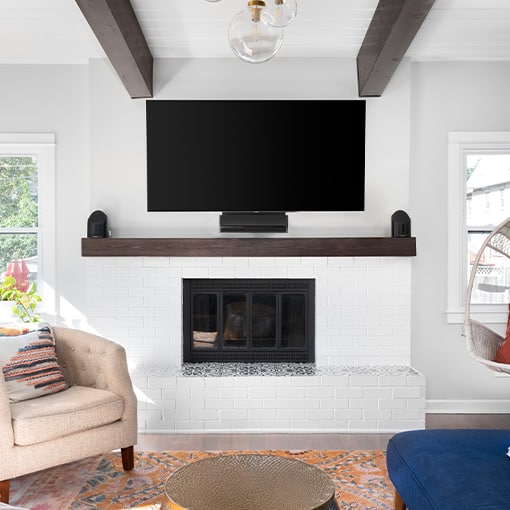
Can I Mount My Tv Above The Fireplace

Safely Mount A Tv Above An Electric Fireplace Touchstone Home S Inc

How To Mount An Electric Fireplace With A Tv Fireplaces Direct Learning Center

Is It Safe To Mount Your Tv Above The Fireplace Chimney And Wildlife

Can I Mount My Tv Above The Fireplace

How To Mount Tv On Brick Fireplace Wall Step By The Men

How To Mount A Tv Over The Fireplacebeautifully Old Barn

How To Mount An Electric Fireplace With A Tv Fireplaces Direct Learning Center

Installing A Tv Above The Fireplace
Related Posts

